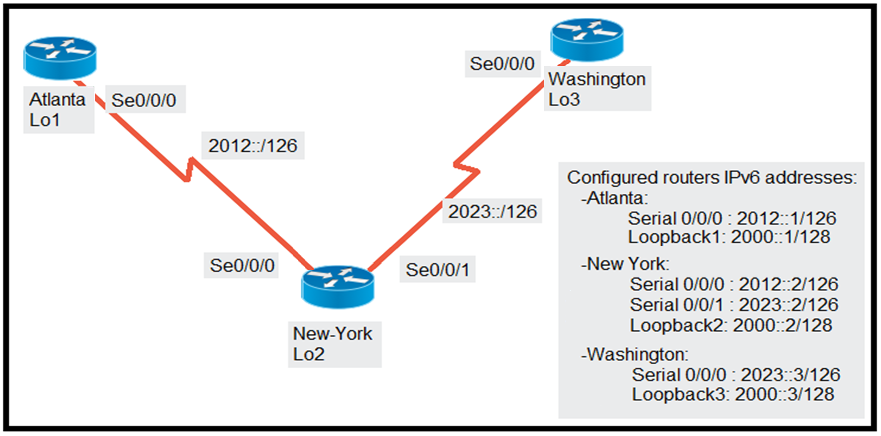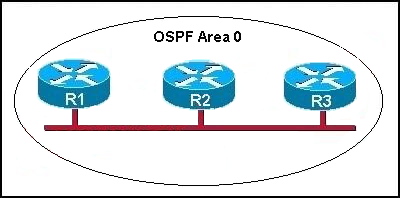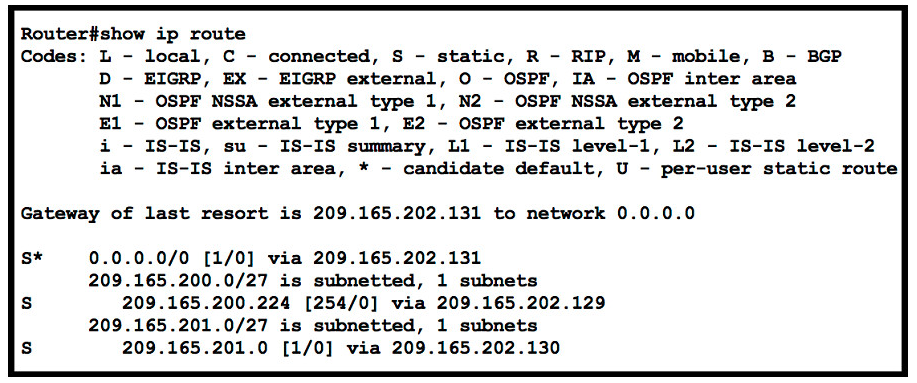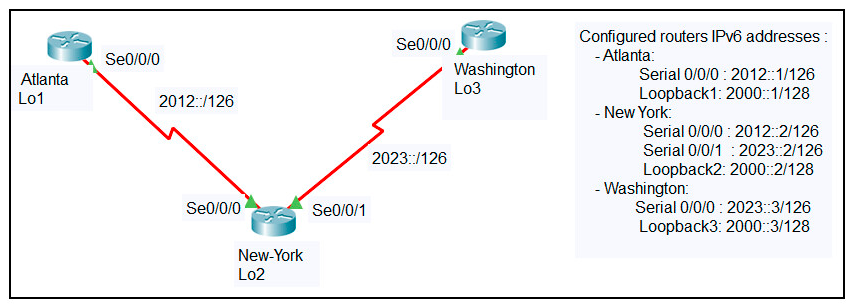Which MAC address is recognized as a VRRP virtual address?
A

Refer to the exhibit. The New York router is configured with static routes pointing to the Atlanta and Washington sites.
Which two tasks must be performed so that the Se0/0/0 interfaces on the Atlanta and Washington routers reach one another? (Choose two.)
BD
A router running EIGRP has learned the same route from two different paths. Which parameter does the router use to select the best path?
D
If a router learns two different paths for the same network from the same routing protocol, it has to decide which route is better and will be placed in the routing table. Metric is the measure used to decide which route is better (lower number is better). Each routing protocol uses its own metric.
For example, RIP uses hop counts as a metric, while OSPF uses cost.
Reference:
https://study-ccna.com/administrative-distance-metric/
An engineer configured an OSPF neighbor as a designated router. Which state verifies the designated router is in the proper mode?
D

Refer to the exhibit. Which route does R1 select for traffic that is destined to 192.168.16.2?
D
The destination IP addresses match all four entries in the routing table but the 192.168.16.0/27 has the longest prefix so it will be chosen. This is called the
ג€longest prefix matchג€ rule.

Refer to the exhibit. If configuring a static default route on the router with the ip route 0.0.0.0 0.0.0.0 10.13.0.1 120 command, how does the router respond?
D
Our new static default route has the Administrative Distance (AD) of 120, which is bigger than the AD of OSPF External route (O*E2) so it will not be pushed into the routing table until the current OSPF External route is removed.
For your information, if you don't type the AD of 120 (using the command ג€ip route 0.0.0.0 0.0.0.0 10.13.0.1ג€) then the new static default route would replace the
OSPF default route as the default AD of static route is 1. You will see such line in the routing table:
S* 0.0.0.0/0 [1/0] via 10.13.0.1
Refer to the graphic. R1 is unable to establish an OSPF neighbor relationship with R3. What are possible reasons for this problem? (Choose two.)
DF
This question is to examine the conditions for OSPF to create neighborhood. So as to make the two routers become neighbors, each router must be matched with the following items:
1. The area ID and its types
2. Hello and failure time interval timer
3. OSPF Password (Optional)

Refer to the exhibit. Which command configures a floating static route to provide a backup to the primary link?
A

Refer to the exhibit. An engineer configured the New York router with static routes that point to the Atlanta and Washington sites. Which command must be configured on the Atlanta and Washington routers so that both sites are able to reach the loopback2 interface on the New York router?
A
Reference:
https://www.cisco.com/c/en/us/td/docs/ios-xml/ios/iproute_pi/configuration/xe-3s/iri-xe-3s-book/ip6-route-static-xe.html#GUID-85796C3A-3143-4DF7-B9D0-
8EC87D0DB08B
What is the effect when loopback interfaces and the configured router ID are absent during the OSPF Process configuration?
D